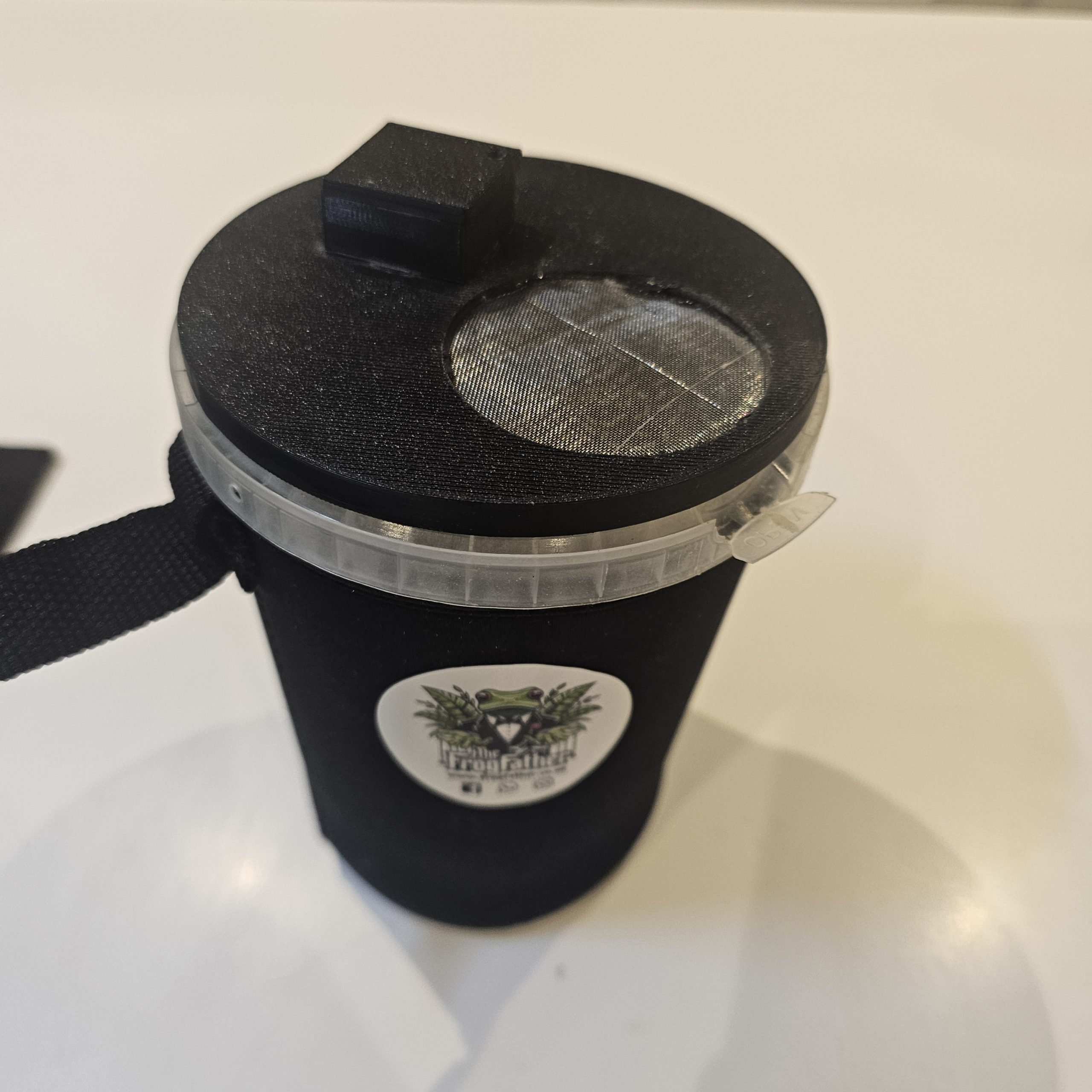Ranitomeya amazonica is a stunning thumbnail dart frog from the Peruvian Amazon, famous for its bright orange head pattern and dark body with fine reticulation. Small, active and wonderfully bold once settled, this species is a joy to watch in a planted, bromeliad-rich vivarium. If you’re seeking a compact showstopper with fascinating behaviour, R. amazonica is a brilliant choice.
Origin & Distribution
Native to the upper Amazon Basin of Peru, typically in lowland rainforest with dense leaf litter, mossy roots and abundant epiphytes. They frequent microhabitats around Guzmania and Vriesea bromeliads where humidity and shelter are constant.
Size, Lifespan & Appearance
Adults reach 16–20 mm. Signature look: a bright orange mask/helmet on the head and a dark to chocolate body with fine pale speckling or reticulation. With good care they routinely live 8–10 years.
Temperature & Humidity
- Day: 22–25 °C (night drop to ~20 °C)
- Humidity: 85–100% with twice-daily misting or automated system
- Moderate ventilation to prevent stagnant air while keeping the substrate moist
Vivarium Setup (Semi-arboreal)
A vertical or cube enclosure (e.g. 30×30×45 cm for a pair) with dense planting, cork tubes and bromeliads for shelter and tadpole deposition. Bioactive substrate, deep leaf litter and moss help maintain stable humidity. For clean airflow and viewing, a vented 3D vivarium works beautifully.
Diet
Daily small prey: fruit flies (melanogaster & hydei), springtails and micro-crickets. Dust every second feed with All-in-One Vitamin & Mineral Dust for colour, bone health and breeding condition.
Social Behaviour & Visibility
Keep as a pair or trio (one male : two females) in well-structured tanks. Males may posture around calling sites. Once settled they’re surprisingly bold, often visible foraging among leaves or sitting high in bromeliads.
Calling
Males give a soft, insect-like buzz, audible but gentle — perfect for indoor setups. Calling increases after misting and in the early morning.
Breeding & Parental Care
Eggs are laid on smooth, sheltered surfaces (film canisters or bromeliad leaf bases). The male guards and hydrates the clutch, then transports each tadpole on his back to separate water cups (usually bromeliads). Tadpoles are non-obligate egg feeders and develop on micro-organisms and prepared diets; metamorphosis typically takes 8–12 weeks.
Availability in the UK
Ranitomeya amazonica dart frogs for sale in the UK appear periodically via specialist, captive-bred lines. Frogfather UK works only with responsible UK breeders, ensuring healthy animals acclimated to vivarium life.
Quick Care Summary
- Type: Thumbnail, semi-arboreal
- Best kept: Pair or trio (spacious, planted tank)
- Temps: 22–25 °C (day)
- Humidity: 85–100%
- Diet: Small live foods, dusted regularly
- Breeding: Male transports tadpoles; bromeliad pools recommended
- Call: Soft buzz; indoor-friendly
FAQs
Is Ranitomeya amazonica good for beginners?
Better for confident beginners to intermediate keepers who can maintain high humidity and provide bromeliads.
Can they live in groups?
Pairs or a trio work; avoid multiple males in small tanks. Provide lots of cover and sight-breaks.
Do they need bromeliads?
Highly recommended for security and breeding; they also accept film canisters angled upwards.
How loud is the call?
Quiet, insect-like buzz — noticeable nearby but not disruptive.



